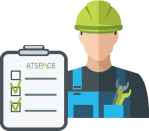Trusted by 9K+ businesses


Before starting any project, it is advisable to get good acoustic design advice. This will ensure that sound insulation tests meet the requirement with in Part E of the building regulations.
It is advisable that buildings are usually empty when tested, as it makes testing easier and affords a truer, better result. Any noise created within the building can be picked up by the meter and affect the final result of the sound test.
By following some simple rules, you will give yourself the best possible chance of passing any sound test.
• Make sure all penetrations and gaps are sealed, ideally with an acoustic board or quilt.
• Use resilient bars within a ceiling cavity.
• Ensure an experienced contract completes any acoustic work, use the right materials.
• Don’t place electrical sockets back-to-back on party walls, use acoustic back boxes if possible.
• Don’t use lightweight blocks within the cavity of party walls.
• Use an acoustic membrane on floors.
• Ensure doors and windows have a tight fitted close to avoid any flanking.
• Consideration should be given to existing structural beams and walls, which may carry sound.
The number and type of testing (Airborne & Impact) will depend on the building type and location.
ATSPACE will provide you with the details of the type and number of tests you will require for your project.
There are 2 different types of noise tested for by 2 different types of tests.
• Airborne
• Impact
Impact: This is the noise created by noise created against a surface, footsteps or banging.
Airborne noise is tested through walls and floors, and impact noise is tested through floors only. Most builders will plan the sound test in the program of works to take place just before the property is handed over to a client or occupation. The building should be tested as soon as it is complete, as all the final finish has been completed and the best chance of a successful result is possible. Once the property becomes occupied and lived in, the fabric of the building will change.
